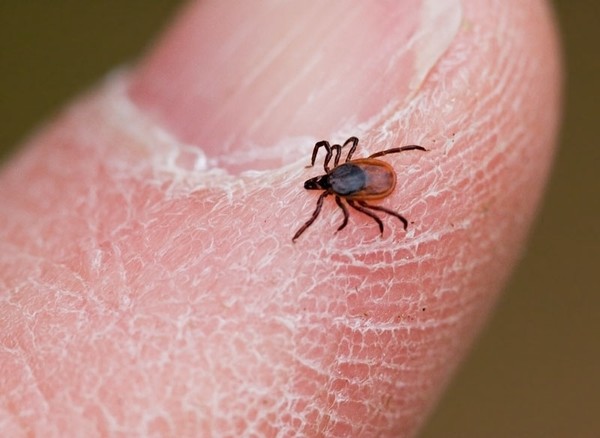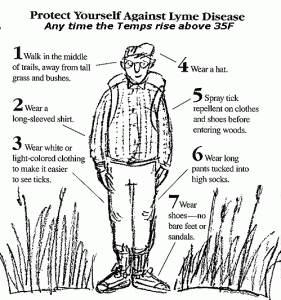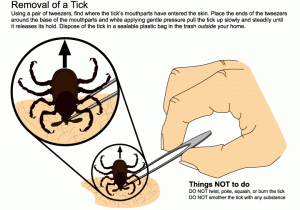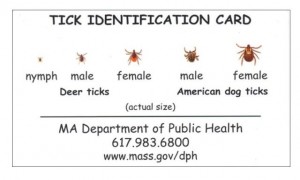It’s that special time of year…

Despite the stormy weather today, spring has arrived, and along with the warm and sunny weather comes some less welcome members of the biotic community: ticks.
While I was up at Noble View in Russell, MA this last weekend with some AIAO staff and other outdoorsy types re-certifying in wilderness first aid, one of my fellow classmates found a tick on her arm. And, just like that, I went from blissful winter mode to vigilant tick-check mode.
You see, I was diagnosed with Lyme Disease a couple of years ago, and I can tell you from first hand experience that it’s no fun. And Lyme is not the only tick-borne illness to be concerned about; there are many others.
This is my reminder to you: it’s time to reinstate our regular warm weather precautions to prevent tick bites. Light colored clothing, long pants and shirt sleeves, tucking pants into long socks, using various bug repellants, avoiding tall grasses, and tick-checks are all good things to consider. But education trumps them all.
Check out the Centers for Disease Control and Prevention (CDC) tick information page
The University of Massachusetts also offers, for a fee, ttick-pathogentesting. You can visit their website for more information. You can also visit the CDC’s site for more information on the efficacy of these tests.
Gratuitous infographics:
(Another Reason) Why You Should Brake for Possums

Unfortunately, Lyme Disease and other tick-borne illnesses have become commonplace in the Northeast. Speaking from personal experience, they’re no fun, which is why this article grabbed my attention. Aside from being another example of the connections that sometimes exist in nature without our knowing, it provides interesting information on how possums, who’s movements will increase as we say ‘Goodbye’ to winter, can lower tick population numbers.
For the full article and accompanying WAMC podcast, visit the Cary Institute of Ecosystem Studies.
And for more information on Adventure In, Adventure Out’s tracking and adventure programs, please visit our website.
 Adventure In Adventure Out
Adventure In Adventure Out

